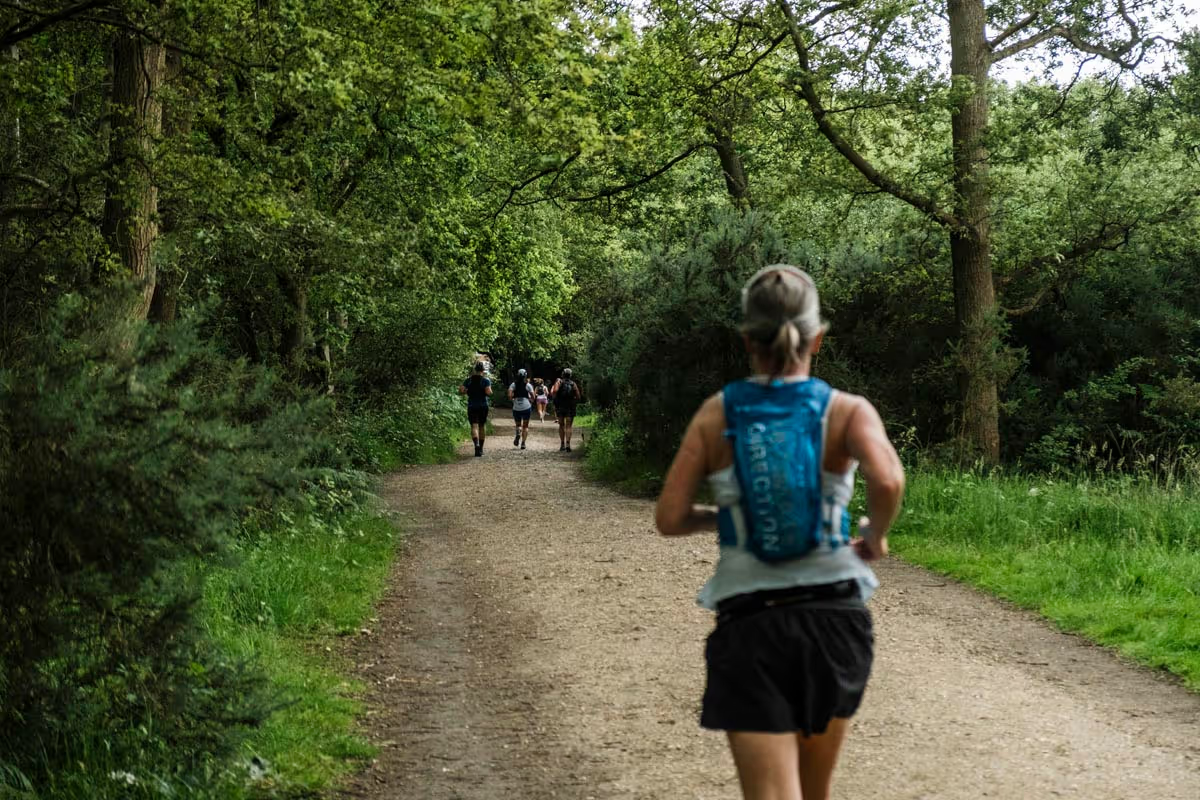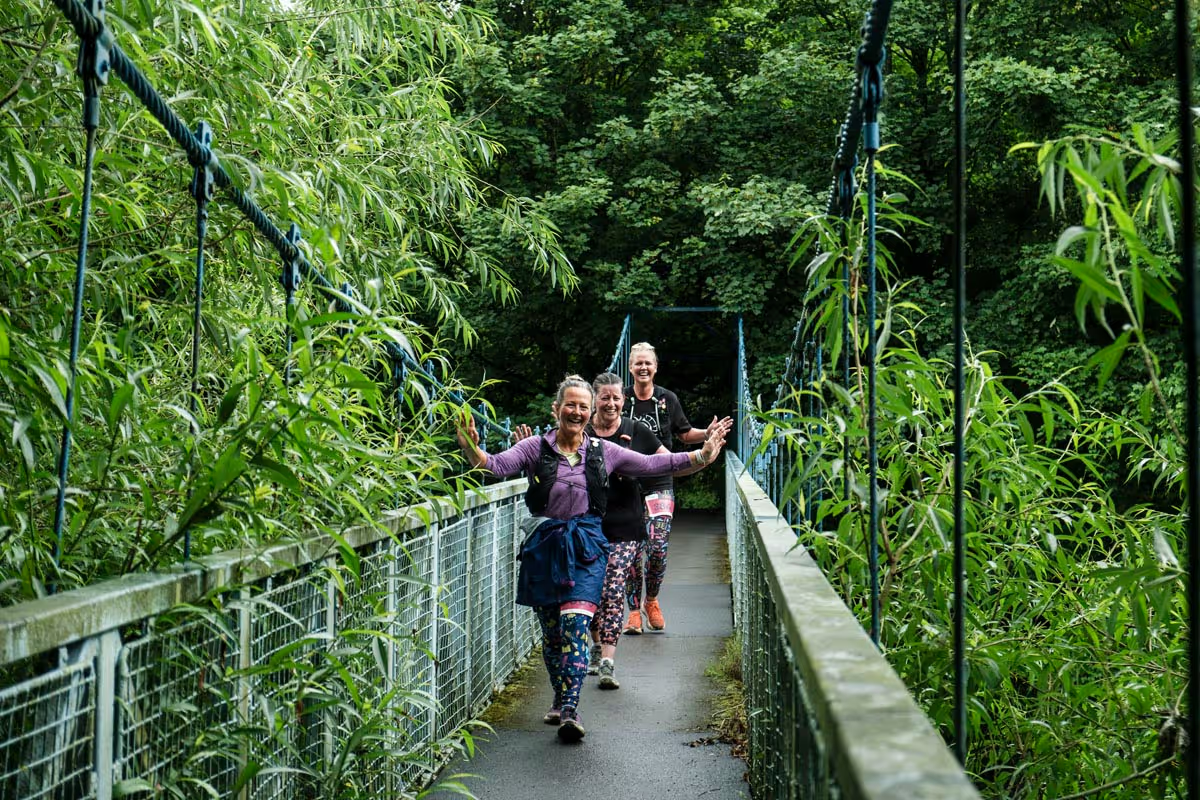Moving from Roads to Trails

Running is addictive. And once you’ve been bitten by the bug, it can be tempting to push yourself. To work out where your limits are - or where you thought they were - and then go a little bit further or faster.
Soon, you’ve got a regular running routine and a race or two under your belt. And that’s the point where you might start thinking ’What’s next?’
If you’re starting to think about your next challenge, you might have considered trail running. But what exactly IS it? And what do you need to know if you’re considering making the leap from solid ground to a run on the wild side?
So what IS trail running? Trail running at its core is simply running in nature. That means heading off the beaten (or tarmac) path or road and embracing all kinds of terrain - from muddy tracks to mountains.
The more you get into trail running, the more you’ll find new challenges and adventures to explore - from crossing shallow streams to lengthier ascents and descents. And if you thought road running was addictive, just wait until you experience the highs - and the views - of trails.
Trail runs are technically defined by terrain, but many trail runners like to challenge themselves in the distance department, too. When you first make the move to trails you’ll need to start slow and steady, but as your stamina builds you might decide to take on longer runs. You might have heard of ‘ultras’, which often start at the 50km (or 31 mile) mark. Some ultra running events can take a number of days, with runners stopping to sleep at various points on the way.
There’s plenty of crossover between trails and ultras, but the most important thing to know is that there are plenty of options - and lots of shorter options for those runners making their first move from tarmac to trail.
The mindset leap Trail runs can sound pretty intense. All those hills and dips and uneven ground - not to mention the challenge of navigating your way along a largely unmarked route. And once you start looking at longer trail challenges (those 50+km - or 31+ miles - events), they start to sound downright intimidating - right?
Wrong! Prepare to forget everything you thought you knew about running - keeping a consistent pace, never stopping, keeping an eye on your splits. At Beyond Trails events, we actively encourage entrants to stop at the checkpoints, have a drink, a bite to eat and a debrief before heading off on the next stretch. No one is expected to run the whole way - it’s all about taking your time to soak up the scenery and manage your energy output so you can take on the most challenging stretches.
We’ve already mentioned the views, but trail running also boasts other benefits. You’ve got the opportunity to spread out and talk to those around you while you run; alternatively, you can take some time to clear your head and connect with the natural world. No more clashing elbows or tripping up over each other - and that’s a promise.
You could say it’s not so much about speeding up, but rather slowing down - mentally and perhaps even physically, depending on what you want to get out of trail running.

Talking the trail lingo Another potential hurdle for new trail runners is the language. Don’t let the jargon dissuade you, though - understanding it is key to taking on your next challenge.
A lot of trail runs talk about GPX files. These are simply the files many race organisers use to share their event routes. You’ll need to download an app such as Strava or OS Maps, or you can use a GPS watch. Once you’ve saved the file, you just need to follow the route - and focus on the experience instead of worrying about getting lost.
Trail runners also talk about ‘waymarking’. With standard road races, it’s easy to stay on course, but over long, more rural distances things can get confusing, which is where waymarking comes in. Waymarking means the reference points runners use alongside official race signs to track their progress over along long countryside routes. Not all trail runs use conventional signing - there are more restrictions - so make sure you study your route ahead of your race (e.g. do a recce trip) and have your GPX file downloaded.
And if you’re looking for an intro, look no further than Beyond Trails - just take a look at our 5* reviews to understand why so many runners keep coming back to our clearly signed, well-marshalled events. There are four locations to choose from, and different distances available.
Key equipment Another reason people put off trying trails is because of the mistaken assumption that you require lots of special - and expensive - kit. At Beyond Trails, we ask you to bring the following essentials - anything extra is up to you:
● A fully charged mobile phone
● Debit/credit card
● A running pack or vest
● Foil survival blanket
● Water bottle or collapsible cup
● 1L of water and some running snacks/gels
● Closed-toe running shoes
● Cap, suncream, sunglasses or waterproodf jacket (depending on the weather)
What’s in it for me? As we’ve explained, trail running is a totally different beast to hitting the tarmac. Beyond Trails events promise jaw-dropping scenery, much-loved landmarks and hidden treasures along a route that takes in everything from becks to breathtaking heights.
Plus, there’s the unbeatable sense of calm that comes from surrendering to your surroundings over a lengthy run, the comradeship with other runners and an incredible sense of pride as you cross that finish line and cross off your first trail running success.
So don’t be put off. Trail running is far more achievable and inclusive than you might think. And if you’re looking for a place to start, take a look at Beyond Trails, where you can choose the level of challenge to suit you.